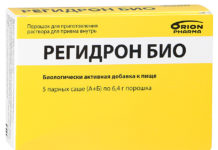Many tropical plants appeared on domestic suburban areas solely due to their exotic appearance. Bright purple ears that adorn the amaranth plant stand out against the background of other flowers and attract the eye with their unusual and decorative features.
Whereas in the homeland of amaranth, in South America, this plant is considered one of the main crops used not only for cooking, but also for the treatment of various diseases.
Material Content:
- 1 The chemical composition, vitamins and minerals of amaranth
- 2 The benefits of seeds, amaranth leaves
- 3 The healing properties of amaranth
- 4 How to use a plant - recipes
- 5 The benefits of flour from the plant amaranth
- 6 Amaranth seed oil: what are the benefits?
- 7 Application in traditional medicine
- 8 Contraindications and possible harm
The chemical composition, vitamins and minerals of amaranth
The high level of nutrition and healing potential of amaranth were appreciated in ancient times. The ancient Aztecs called the plant "food of immortality", and the inhabitants of India to this day consider amaranth the king of grains.
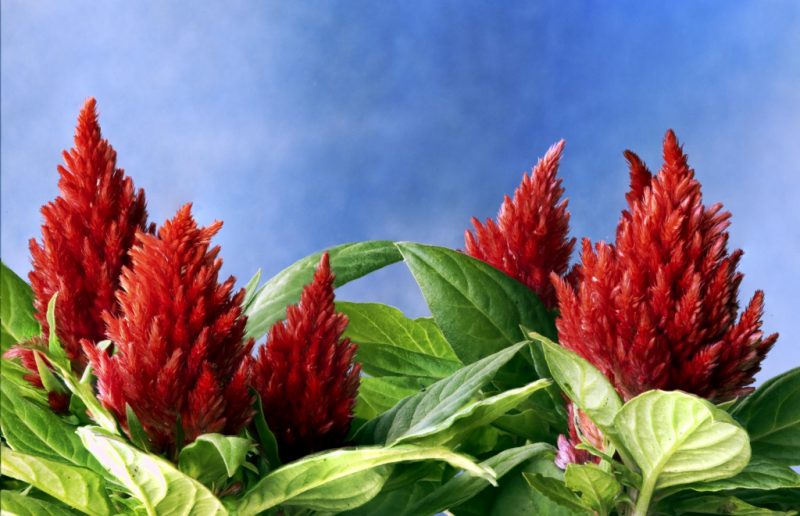
Initially, representatives of the amaranth family were distributed in Mexico, Argentina, China and India. In the 16th century, the Spaniards brought plant seeds to Europe, actively colonizing the lands of the New World at that time.
But even in the 18th century, when information about the possibilities of agricultural use of the plant was discovered, amaranth continued to be grown to decorate the garden, less often as a grain or fodder crop.
Nowadays, amaranth has received well-deserved recognition - the plant is considered a source of biological substances valuable to the body and is used to prepare baby food.Amaranth is used in agriculture, cosmetology, as well as traditional and traditional medicine.
Amaranth oil, one of the most expensive on the market, is famous for its special healing power.
The nutritional value of amaranth is due to the presence of a huge number of trace elements, a combination of which doctors consider unique.
The wealth of the terrestrial part of the plant - in its composition:
- vitamins - A, C, groups B, E, D;
- trace elements - iron, zinc, selenium, manganese, barium, copper;
- macrocells - calcium, phosphorus, magnesium, calcium and sodium;
- amaranthine substance, from which amaranthine alkaloid is obtained - a water-soluble antioxidant;
- polyphenols (up to 16%), including flavonoids - quercetin, rutin, trefoline and glycosides of the flavonoid group - kempferol and isoramnetin aglycones;
- carotenoids;
- natural amino acids (up to 15%) - cystine, arginine, valine, lysine, nizatidine, tryptophan, leucine, albumin, globulins;
- pectin;
- dietary fiber (up to 34%);
- easily digestible protein (up to 21%);
- trihydroxyflavone afromosin and daidzein;
- vegetable oils containing biologically active components and polyunsaturated fatty acids (up to 9%) Omega-3 and Omega-6 - linoleic, arachinic, behenic, oleic, palmitic, stearic, linolenic;
- triglycerides and lipids (up to 85%);
- phytosterols;
- starch (up to 60%);
- Squalene hydrocarbon (up to 11%) - a unique substance with antioxidant properties, a precursor to steroids and triterpenes;
- betacyanine pigments.
It is interesting: triglycerides are elevated - what does it mean
100 g of amaranth contains 11.29 g of water, 13.56 g of protein, 7.02 g of fat, 68.55 g of carbohydrates, 6.7 g of fiber, 2.88 g of ash.
Amaranth seeds are several times superior to wheat and soy in terms of protein content.
The benefits of seeds, amaranth leaves
Both the seeds and leaves of the plant are characterized by a high level of biological value.
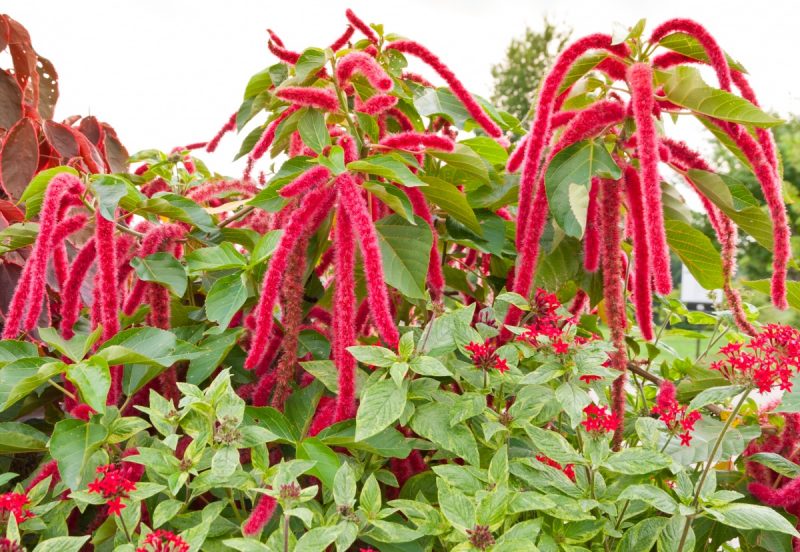
Flour, bran, starch and oil are produced from amaranth seeds. Whereas the leaves of the plant are used to prepare various dishes.
Since seeds and leaves differ in chemical composition, their therapeutic effect occurs in different ways.
Useful properties of seeds

Amaranth seeds - a dietary product with valuable properties for health:
- promotes the synthesis of vitamin D in the body;
- improves digestion, cleanses the intestines from stagnant food masses, toxins and heavy metals;
- amaranthine alkaloid intercepts free radicals, suppresses oxidative processes in lipids of liposome membranes, restores ferrous ions, inhibits the activity of free radical reactions when exposed to adverse environmental factors;
- proteins provide a quick feeling of fullness, preventing overeating;
- participates in metabolic processes of the liver;
- improves metabolism;
- supports the functionality of the adrenal cortex;
- maintains a high level of blood composition;
- helps the synthesis of hormones;
- strengthens the nervous system;
- regulates water, electrolyte and acid balance;
- contributes to the normalization of pressure;
- prevents the development of calcium deficiency.
Germinated amaranth seeds are considered an effective tool for the fight against cancer.
Useful properties of leaves
The regular consumption of dishes with amaranth leaves saturates the body with the necessary amount of proteins, proteins, vitamins and vital trace elements.
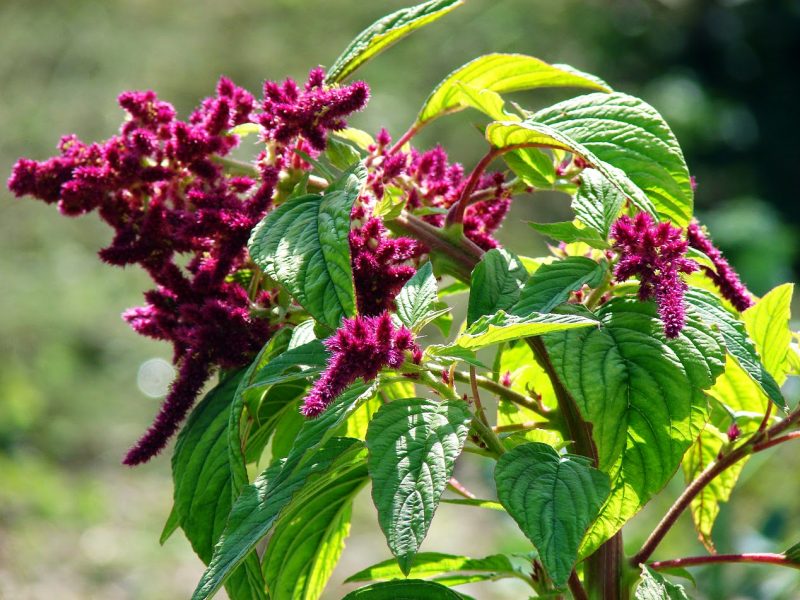
In addition, amaranth leaves have a large-scale healing effect on the whole body:
- provide activity of the immune system;
- regulate hormonal balance;
- improve the functionality of the reproductive system;
- have a hepatoprotective effect;
- protect against fungal and bacterial damage;
- stop pain and inflammatory processes;
- normalize the temperature;
- contribute to the production of insulin;
- strengthen the cardiovascular system;
- restore the work of the respiratory organs.
Juice from amaranth leaves is indicated for use by young children as a source of valuable natural proteins necessary for full development.
Amaranth is recommended for daily use by the World Health Organization.
The healing properties of amaranth
Due to the huge healing potential of the plant, the medicinal properties of amaranth are used to eliminate many health problems.
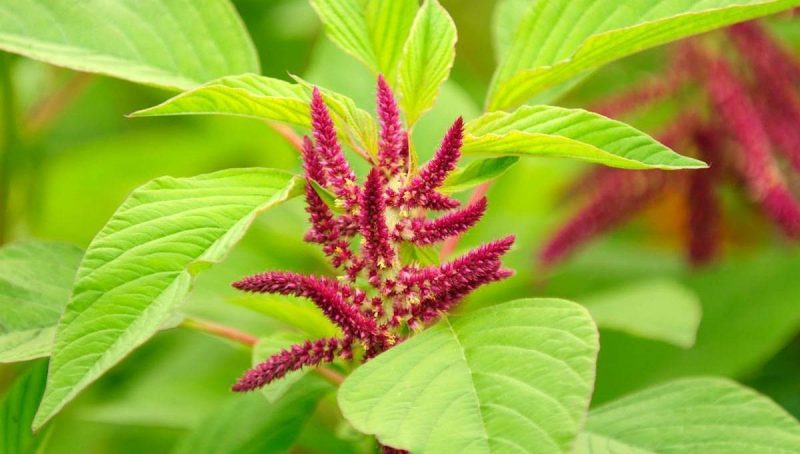
Amaranth-based products are indicated for:
- pathologies of the respiratory system - asthma, chronic bronchitis, emphysema, tuberculosis;
- anemia
- obesity;
- diabetes mellitus;
- gastrointestinal pathologies - ulcerative lesions of the intestine, colitis, constipation, hemorrhoids, intestinal colic;
- liver diseases;
- atherosclerosis, hypertension, coronary heart disease;
- vitamin deficiency;
- stomatitis and periodontitis;
- inflammatory processes in the organs of the genitourinary system;
- metabolic disorders;
- oncological diseases;
- psoriasis, neurodermatitis, eczema, infectious skin diseases;
- burns, pressure sores;
- tendency to allergies;
- dysentery;
- dysfunctions of the nervous system.
Along with this, amaranth is recommended for the prevention of osteoporosis, the tendency to which increases over the years.
In addition, amaranth has a restorative effect on the body and is recommended for loss of strength and to support brain activity.
In cosmetology
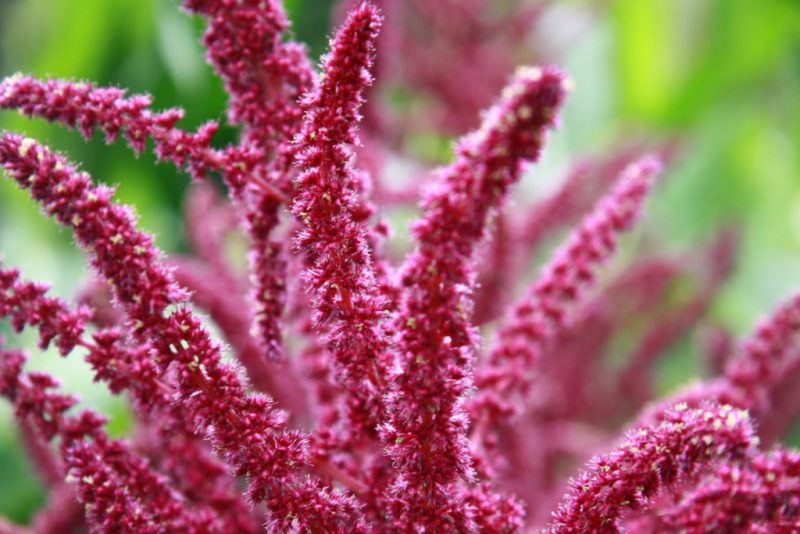
The healing power of amaranth allows you to fight even age-related defects in appearance. Clinical trials have confirmed the effectiveness of the plant to eliminate premature gray hair, improve skin condition and rejuvenate.
For pregnant women and children
Amaranth not only strengthens women's health, helping to fight various diseases and preventing ovarian cancer. The use of the plant during pregnancy ensures the full development of the fetus and helps to improve the functionality of the spinal cord and brain of newborns.

The use of amaranth is indicated even for infants. Just one teaspoon of amaranth juice with the addition of a drop of honey will provide a daily dose of protein in the child's body. Toddlers who regularly use amaranth grow healthy and develop faster than their peers.
How to use a plant - recipes
A huge number of cooking methods prove that amaranth is a plant for food. For eating, not only the leaves and seeds of the plant are used, but also flour and oil.

Amaranth leaves are mainly boiled and used for making soups. Amaranth leaf is especially popular in India.
Pastries and various kinds of sweets are prepared from seeds. Amaranth groats are an excellent base for making porridge. And the inhabitants of some Latin American countries fell in love with beer brewed from amaranth.
Amaranth seeds are the basis for preparing a complete side dish that can replace rice and pasta. Three glasses of water are taken for one glass of amaranth seeds and boiled for twenty minutes.
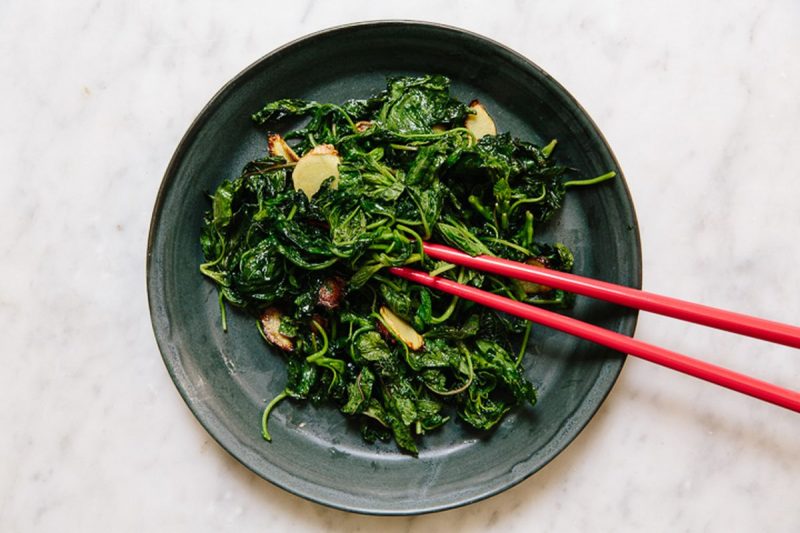
Amaranth seeds can also be added to minced meat for cutlets, pudding (instead of rice) or cocktails to give them a delicate nutty flavor.
Braised amaranth leaves along with fried onions are used as a filling for pies or as an addition to soup and vegetable stew.If the leaves are dried, they must first be soaked.
The benefits of flour from the plant amaranth
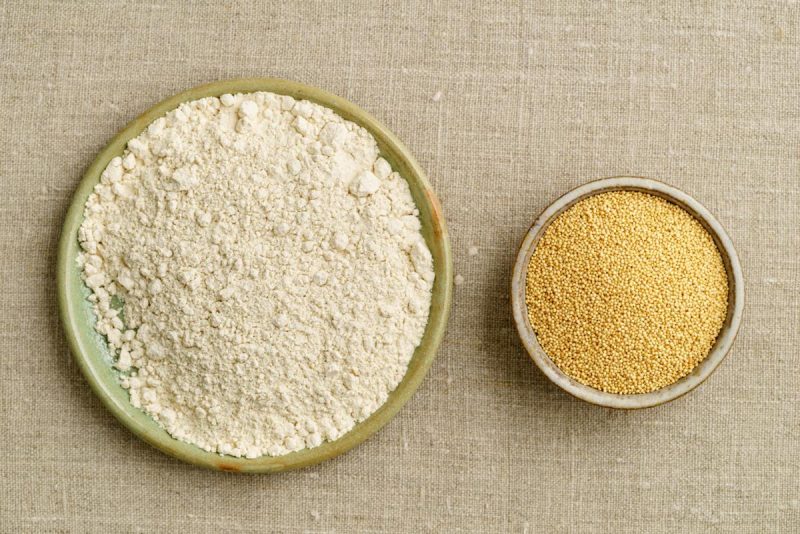
Ground amaranth grains are called amaranth flour and are used to prepare various flour dishes - baking, bread, pancakes. The industry of many Asian countries produces pasta, biscuits, waffles, chips, muffins and mixes for baby food from amaranth flour.
Amaranth flour retains all the medicinal properties inherent in the seeds of the plant and is recommended for the preparation of diet foods.
Amaranth seed oil: what are the benefits?
Amaranth oil has absorbed a maximum of useful properties and healing capabilities inherent in the ground part of amaranth. Due to its unique composition, the healing power of amaranth oil is superior to any other analog products.
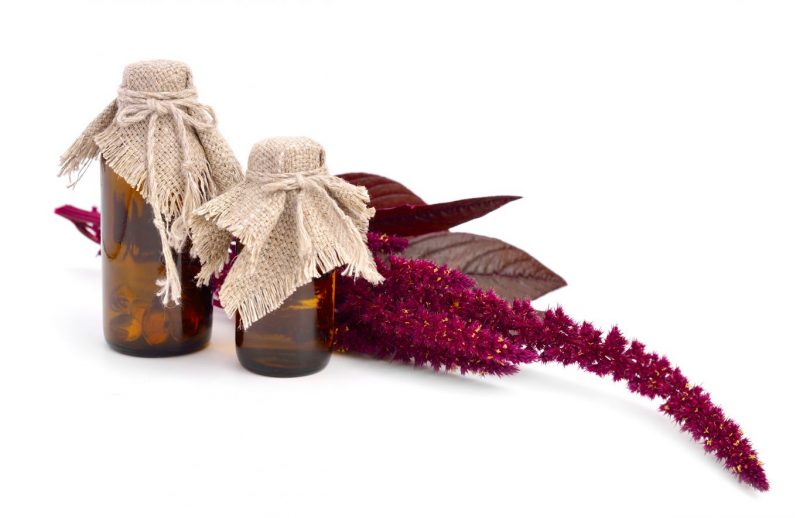
The biological value of the product is:
- the ability to normalize blood cholesterol, preventing the development of atherosclerosis and varicose veins;
- the presence of a particularly active tocotrienol form of vitamin E, due to which the antioxidant potential of the oil has increased 50 times;
- the presence of squalene, which triggers restoration processes in the body. The substance has pronounced antioxidant properties and ensures the regulation of lipid and steroid metabolism;
- the ability to heal any skin lesions, restore vision, strengthen the immune system;
- normalization of the hormonal level of the female body.
Amaranth oil is used in the treatment of gynecological diseases, heart and nervous system diseases, diabetes mellitus, pathologies of the liver and gastrointestinal tract, joint inflammation and muscular dystrophy, as well as diseases of the throat and oral cavity.
Application in traditional medicine
In folk medicine, amaranth is used to make decoctions and infusions, squeeze juice and prepare solutions for bathing.
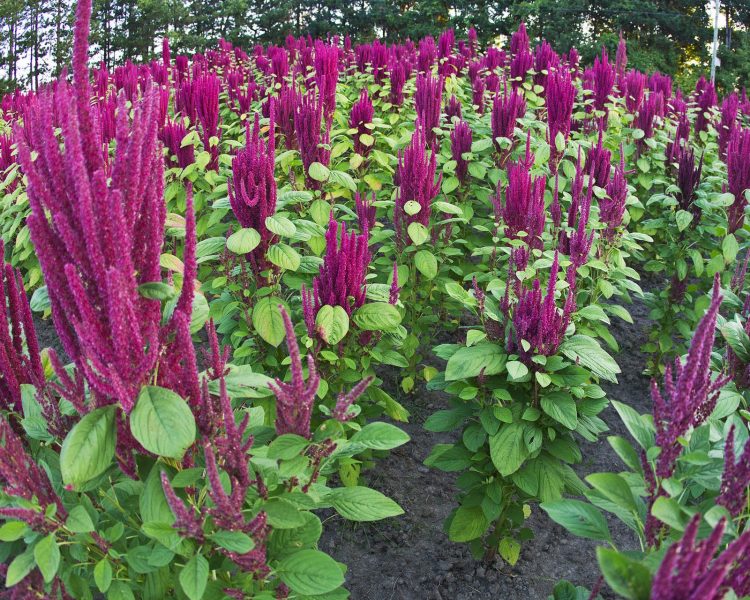
An infusion of amaranth herb is prepared as follows: one tablespoon of crushed raw material is poured into a glass of warm water and heated in a water bath for 15 minutes. With a decrease in the initial volume, add boiling water.
The recommended dose for oral administration is two large sips half an hour before meals for two weeks.
To eliminate inflammatory processes in the oral cavity, the infusion is used as a rinse. Women's health problems are eliminated through tampons with infusion.
For lung diseases, take a teaspoon of amaranth juice mixed with honey.
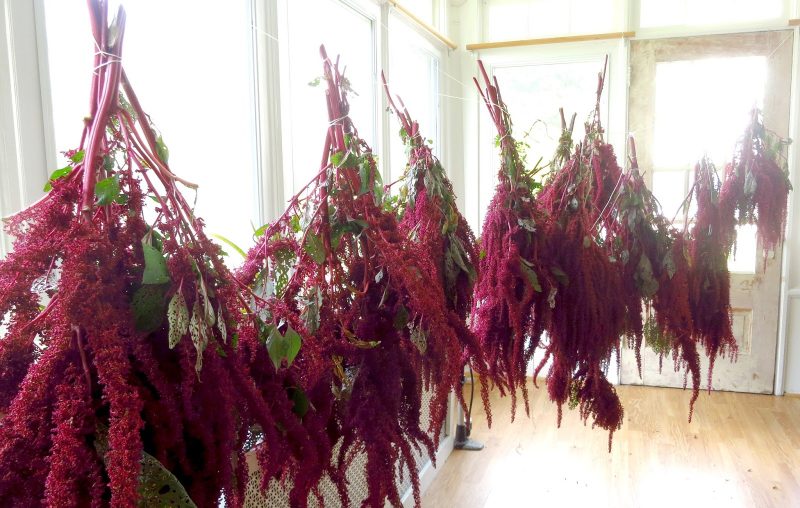
Baths are used to treat skin diseases. For this, three hundred grams of raw material is poured with two liters of warm water, brought to a boil and insisted for 15 minutes. Then poured into bath water. It is recommended to do such baths three times a week, lasting 30 minutes.
Traditional healers recommend using amaranth as an internal and external remedy for enuresis and inflammation of the urinary system, inflammatory processes in the oral cavity, jaundice, dysentery, respiratory diseases, heavy menstruation and intestinal diseases, insomnia, cataracts, insufficient breast milk, pain in the lower back, as well as for rejuvenating the body.
Contraindications and possible harm
In some cases, the use of amaranth can harm the body. With caution, treatment with a plant should be treated with patients with pancreatitis, cholecystitis, celiac enteropathy and urolithiasis.

In the presence of individual intolerance, deterioration in well-being, the appearance of weakness, itchy skin rash, headaches are possible.
If dizziness and nausea appear after taking plant-based products, this should be regarded as a result of oxygen saturation of the tissues due to the active influence of biological components in the plant.
Amaranth has powerful healing power. Regular use of the plant in food will allow for a long time to preserve not only health, but also youth.







